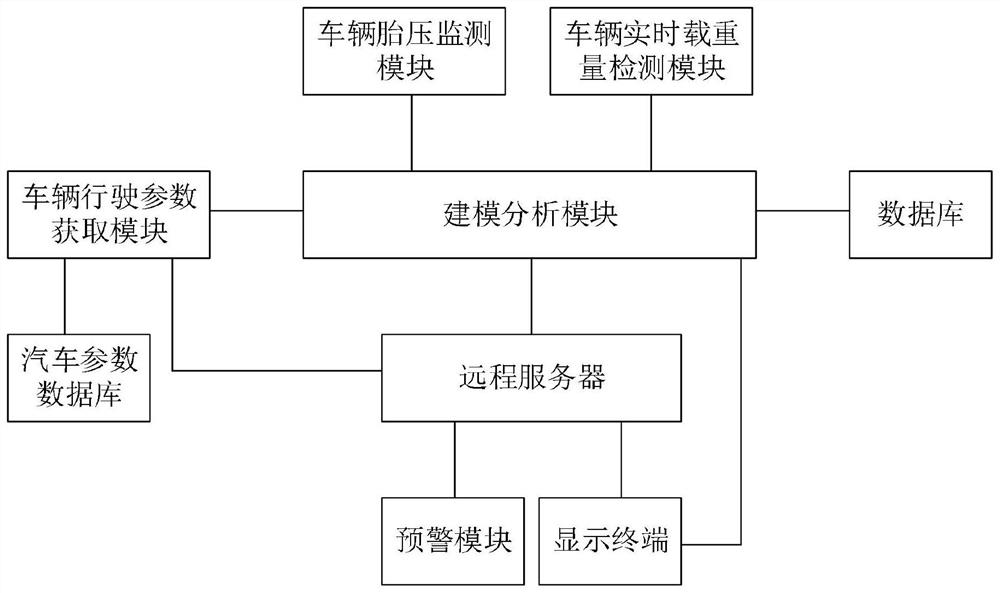Vehicle driving safety intelligent monitoring and early warning management system based on big data
A technology for vehicle driving and intelligent monitoring, applied in the field of vehicle driving safety management, can solve problems such as endangering the personal safety of drivers, abnormal tire pressure, fatigue driving, drunk driving, speeding driving, etc. Occurrence of dangerous accidents and the effect of raising awareness of danger
- Summary
- Abstract
- Description
- Claims
- Application Information
AI Technical Summary
Problems solved by technology
Method used
Image
Examples
Embodiment Construction
[0036] The following will clearly and completely describe the technical solutions in the embodiments of the present invention with reference to the accompanying drawings in the embodiments of the present invention. Obviously, the described embodiments are only some, not all, embodiments of the present invention. Based on the embodiments of the present invention, all other embodiments obtained by persons of ordinary skill in the art without making creative efforts belong to the protection scope of the present invention.
[0037] see figure 1 As shown, a vehicle driving safety intelligent monitoring and early warning management system based on big data includes a vehicle driving parameter acquisition module, a vehicle tire pressure monitoring module, a database, a vehicle parameter database, a vehicle real-time load detection module, a modeling analysis module, a remote Server, early warning module and display terminal, described vehicle driving parameter acquisition module is c...
PUM
 Login to View More
Login to View More Abstract
Description
Claims
Application Information
 Login to View More
Login to View More - R&D
- Intellectual Property
- Life Sciences
- Materials
- Tech Scout
- Unparalleled Data Quality
- Higher Quality Content
- 60% Fewer Hallucinations
Browse by: Latest US Patents, China's latest patents, Technical Efficacy Thesaurus, Application Domain, Technology Topic, Popular Technical Reports.
© 2025 PatSnap. All rights reserved.Legal|Privacy policy|Modern Slavery Act Transparency Statement|Sitemap|About US| Contact US: help@patsnap.com

